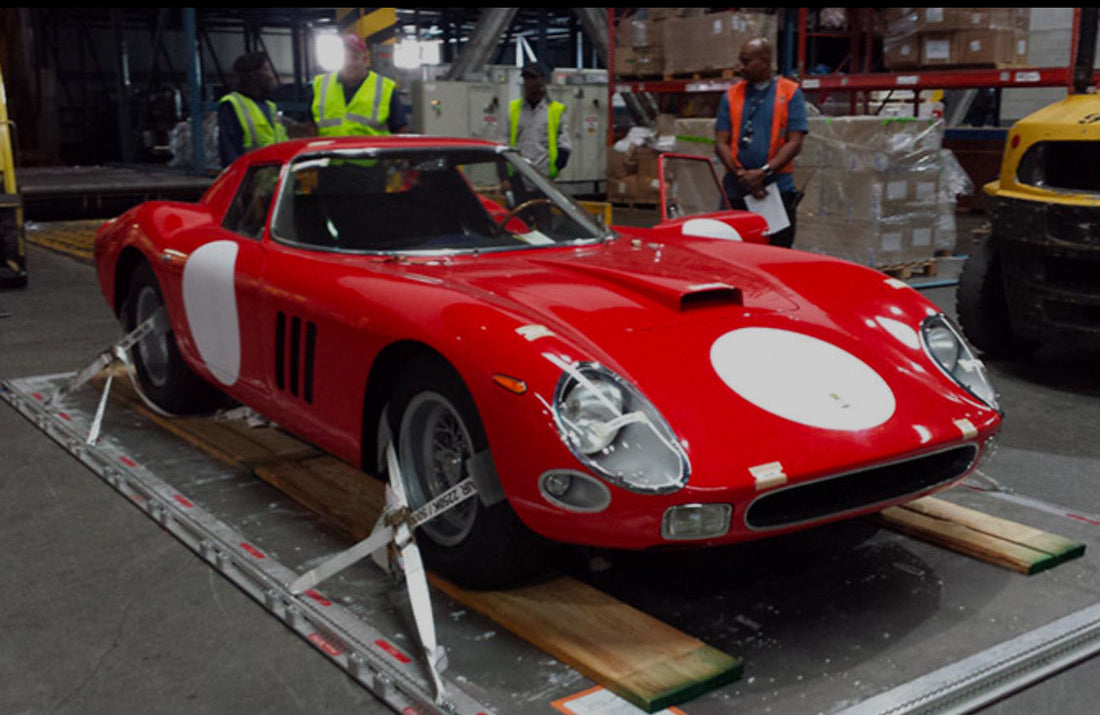
How to Export Classic Cars from the USA
How to Export Classic Cars from the USA: A Step-by-Step Guide
Exporting classic cars from the USA is an exciting and lucrative venture, whether you’re a collector, dealer, or enthusiast looking to expand your collection. However, the process can be complex and requires a well-structured approach to ensure everything runs smoothly. Here’s a step-by-step guide to help you navigate the process of exporting classic cars from the USA.
Step 1: Choose the Right Classic Car
The first step in exporting a classic car is to select the right vehicle. Whether you’re looking for a rare muscle car, a vintage European model, or a unique American classic, it's important to thoroughly research the car’s condition, history, and value. Factors like originality, restoration quality, and market demand should be taken into consideration.
Step 2: Verify the Car’s Documents
Before purchasing a classic car for export, ensure that all the necessary documentation is in order. Key documents include:
- Title: The vehicle's title proves ownership and is necessary for international shipping.
- Bill of Sale: This document provides proof of transaction and can be required by customs.
- Certificate of Origin: This certifies the car’s origin, which is crucial for export.
- Inspection and Appraisal: Ensure the vehicle is in good condition by conducting a thorough inspection and obtaining an appraisal if necessary.
At Soho Export, we assist with verifying the seller’s legitimacy, handling negotiations, and ensuring all required documents—such as the title, bill of sale, and certificate of origin—are correctly prepared for the export process.
Step 3: Find a Reliable Seller or Dealer
Finding a reputable seller or dealer is crucial in the classic car export process. Consider working with trusted dealers or private sellers who specialize in classic cars. If you’re looking for rare or specific models, you may also want to explore private collectors or auction houses. A reliable seller will provide you with the necessary documentation and ensure the car is in the expected condition.
Step 4: Negotiate the Price
Classic cars can vary widely in price, depending on factors like rarity, condition, and demand. Negotiating with the seller is a key part of the process, and it’s essential to ensure that you’re getting the best possible price for the car. If you’re not experienced with negotiating classic car prices, consider working with an expert like Soho Export to help you get the best deal.
Step 5: Arrange for Vehicle Inspection
Before finalizing your purchase, it’s important to have the car inspected to ensure it’s in the condition you expect. This inspection may involve checking the engine, bodywork, interior, and any other components that are critical to the car’s functionality and value. If repairs or maintenance are required, arrange for these to be done before export to avoid any surprises later.
Step 6: Handle Export Documentation
Once the car is purchased and inspected, it’s time to handle the export documentation. This includes:
- Import/Export Licenses: Some countries require specific licenses to import vehicles, especially for classic or rare cars.
- Customs Declaration: You’ll need to declare the car to U.S. Customs and Border Protection for export. Ensure that the car is free of any liens or legal issues that could complicate this process.
- Shipping and Insurance: At Soho Export, we take care of providing all necessary shipping documents, including those required by customs, as well as offering insurance coverage for the car during its transport.
Step 7: Choose a Shipping Method
There are several shipping methods available for exporting classic cars from the USA:
- Container Shipping: This is the safest and most secure method, as the car is placed in a container to protect it from damage and the elements.
- Roll-on/Roll-off (RoRo) Shipping: RoRo is a more affordable option where the car is driven onto the ship and secured on the deck. However, it offers less protection than container shipping.
- Air Freight: If speed is a priority, air freight is an option, though it’s significantly more expensive than sea freight.
Step 8: Ensure Compliance with Import Regulations
Each country has its own set of import regulations for vehicles. Before the car leaves the USA, make sure you’re familiar with the import rules of the destination country. This may include emission standards, customs duties, taxes, and any modifications required to meet local laws. You’ll need to submit the car’s paperwork to the destination country’s customs agency and may have to pay import fees upon arrival.
Step 9: Track the Shipment
Once the car is shipped, you’ll want to track its progress. Most shipping companies provide tracking services that allow you to follow the car’s journey from the USA to its final destination. This helps you stay informed and anticipate any delays or issues along the way.
Step 10: Receive the Car and Complete the Import Process
Once your classic car arrives at its destination, you’ll need to go through the local customs process. This may involve paying any import taxes or fees, completing additional paperwork, and registering the car for road use if required. Depending on the country, you may need to make modifications to the vehicle to meet local standards.
Conclusion
Exporting classic cars from the USA can be an exciting and rewarding process if done correctly. By following these steps—choosing the right car, verifying documents, negotiating the best price, ensuring the car is inspected and repaired, and handling all necessary paperwork—you can successfully import a classic car to your country. Whether you’re a collector or a dealer, working with a trusted export service like Soho Export will streamline the process and help ensure a smooth and secure transaction.
If you’re looking to export a classic or rare car from the USA, Soho Export is here to help. With years of experience and a network of trusted sellers and dealers, we make the process seamless and efficient for you. Contact us today to get started!
